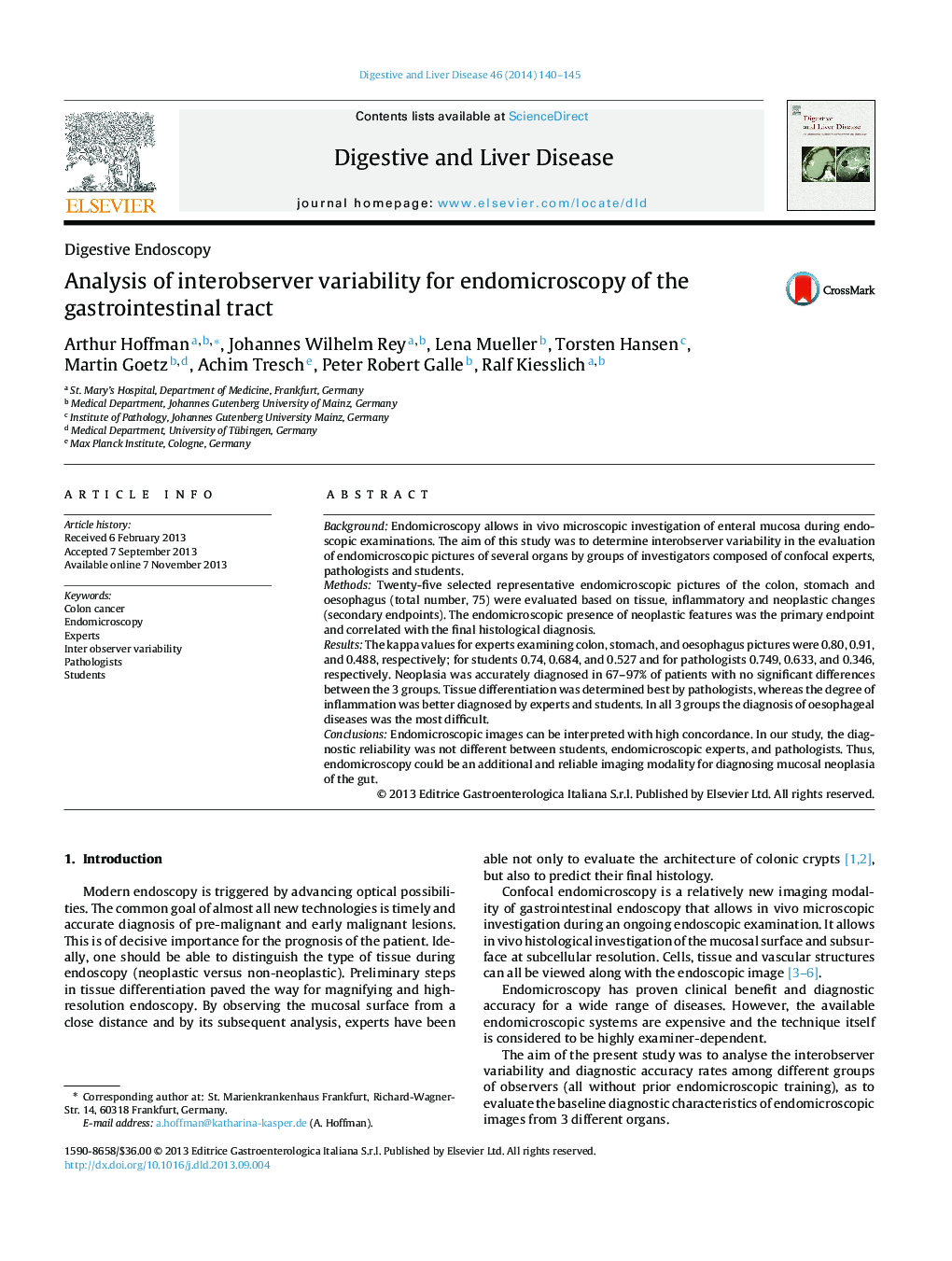| Article ID | Journal | Published Year | Pages | File Type |
|---|---|---|---|---|
| 6088794 | Digestive and Liver Disease | 2014 | 6 Pages |
BackgroundEndomicroscopy allows in vivo microscopic investigation of enteral mucosa during endoscopic examinations. The aim of this study was to determine interobserver variability in the evaluation of endomicroscopic pictures of several organs by groups of investigators composed of confocal experts, pathologists and students.MethodsTwenty-five selected representative endomicroscopic pictures of the colon, stomach and oesophagus (total number, 75) were evaluated based on tissue, inflammatory and neoplastic changes (secondary endpoints). The endomicroscopic presence of neoplastic features was the primary endpoint and correlated with the final histological diagnosis.ResultsThe kappa values for experts examining colon, stomach, and oesophagus pictures were 0.80, 0.91, and 0.488, respectively; for students 0.74, 0.684, and 0.527 and for pathologists 0.749, 0.633, and 0.346, respectively. Neoplasia was accurately diagnosed in 67-97% of patients with no significant differences between the 3 groups. Tissue differentiation was determined best by pathologists, whereas the degree of inflammation was better diagnosed by experts and students. In all 3 groups the diagnosis of oesophageal diseases was the most difficult.ConclusionsEndomicroscopic images can be interpreted with high concordance. In our study, the diagnostic reliability was not different between students, endomicroscopic experts, and pathologists. Thus, endomicroscopy could be an additional and reliable imaging modality for diagnosing mucosal neoplasia of the gut.
